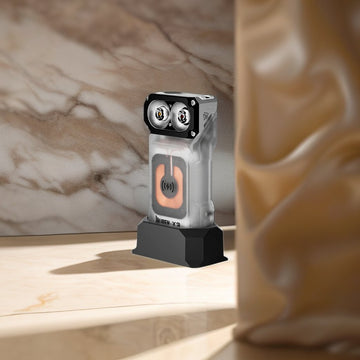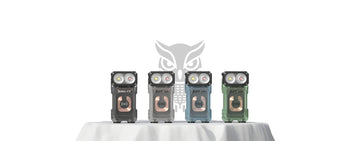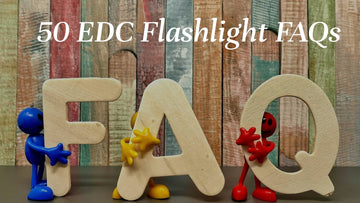
In the realm of lighting, precise measurement of light is crucial for understanding and comparing different sources of illumination. Two commonly encountered units of measurement are lumens and candlepower. In this article, we will delve into the concepts of lumens and candlepower, with a specific focus on converting lumens to candlepower.
Lumens are incredibly important because they help us make informed choices when selecting light fixtures or bulbs. By knowing the number of lumens a light source has, we can determine how bright it will be. This is crucial because different situations require different levels of brightness, you know?
To put it simply, lumens are the real deal when it comes to understanding brightness and selecting the right lighting setup for your needs. It's all about making smart decisions.
Candlepower provides valuable information about the intensity and directionality of light, making it particularly useful for applications that require focused illumination or desired lighting effects. Understanding candlepower allows lighting professionals to evaluate the performance and characteristics of different light sources.
Candlepower = (Lumens x 2π) / Solid Angle
The solid angle is typically measured in steradians, which represents the extent of the surface of a sphere covered by a given angle.
To illustrate the conversion process, let's consider an example:
Suppose we have a light source with an output of 10,000 lumens, emitting light uniformly in all directions. We want to determine the equivalent candlepower rating.
To convert lumens to candlepower, we need to know the solid angle over which the light is emitted. In this case, since the light is emitted uniformly in all directions, the solid angle is 4π steradians, representing the entire surface of a sphere.
Using the conversion formula:
Candlepower = (10,000 x 2π) / 4π
Candlepower = (10,000 x 2) / 4
Candlepower = 20,000 / 4
Candlepower = 5,000
Therefore, a light source with an output of 10,000 lumens is equivalent to a candlepower rating of 5,000.
Significance and Practical Applications
The conversion from lumens to candlepower holds significant value for lighting professionals, architects, and designers who need to assess the intensity and directionality of light. It enables accurate comparisons between different light sources and aids in selecting appropriate lighting solutions to meet specific brightness and directional requirements.
Moreover, the conversion is useful in applications that require focused illumination, such as theatrical lighting, spotlights, or architectural lighting designs. By understanding the conversion from lumens to candlepower, professionals can make informed decisions regarding light fixtures and create desired lighting effects.
In conclusion, lumens and candlepower are two important units of measurement when it comes to evaluating and comparing light sources. While lumens provide an objective measure of the total light output, candlepower focuses on the intensity and directionality of light. The conversion from lumens to candlepower allows individuals to assess the brightness and concentration of light in specific directions. By understanding these concepts and their conversion, professionals and consumers can make informed decisions when selecting lighting solutions for various applications.
Related article: Candlepower to Lumens
Lumens
In the world of lighting, we have this nifty unit called "lumen." It's like the boss when it comes to measuring how much visible light a light source emits.Lumens are incredibly important because they help us make informed choices when selecting light fixtures or bulbs. By knowing the number of lumens a light source has, we can determine how bright it will be. This is crucial because different situations require different levels of brightness, you know?
To put it simply, lumens are the real deal when it comes to understanding brightness and selecting the right lighting setup for your needs. It's all about making smart decisions.
Candlepower
Candlepower is a unit of measurement used to quantify the intensity of light emitted in a specific direction from a light source. It measures the concentration and brightness of light within a given solid angle. Historically, candlepower was defined as the amount of light emitted by a standard candle. However, modern measurement techniques utilize more precise instruments for accurate assessment.Candlepower provides valuable information about the intensity and directionality of light, making it particularly useful for applications that require focused illumination or desired lighting effects. Understanding candlepower allows lighting professionals to evaluate the performance and characteristics of different light sources.
Converting Lumens to Candlepower
Converting lumens to candlepower involves a specific formula that takes into account the solid angle over which the light is emitted. The formula is as follows:Candlepower = (Lumens x 2π) / Solid Angle
The solid angle is typically measured in steradians, which represents the extent of the surface of a sphere covered by a given angle.
To illustrate the conversion process, let's consider an example:
Suppose we have a light source with an output of 10,000 lumens, emitting light uniformly in all directions. We want to determine the equivalent candlepower rating.
To convert lumens to candlepower, we need to know the solid angle over which the light is emitted. In this case, since the light is emitted uniformly in all directions, the solid angle is 4π steradians, representing the entire surface of a sphere.
Using the conversion formula:
Candlepower = (10,000 x 2π) / 4π
Candlepower = (10,000 x 2) / 4
Candlepower = 20,000 / 4
Candlepower = 5,000
Therefore, a light source with an output of 10,000 lumens is equivalent to a candlepower rating of 5,000.
Significance and Practical Applications
The conversion from lumens to candlepower holds significant value for lighting professionals, architects, and designers who need to assess the intensity and directionality of light. It enables accurate comparisons between different light sources and aids in selecting appropriate lighting solutions to meet specific brightness and directional requirements.
Moreover, the conversion is useful in applications that require focused illumination, such as theatrical lighting, spotlights, or architectural lighting designs. By understanding the conversion from lumens to candlepower, professionals can make informed decisions regarding light fixtures and create desired lighting effects.
In conclusion, lumens and candlepower are two important units of measurement when it comes to evaluating and comparing light sources. While lumens provide an objective measure of the total light output, candlepower focuses on the intensity and directionality of light. The conversion from lumens to candlepower allows individuals to assess the brightness and concentration of light in specific directions. By understanding these concepts and their conversion, professionals and consumers can make informed decisions when selecting lighting solutions for various applications.
Related article: Candlepower to Lumens
Tags:
Related Articles




